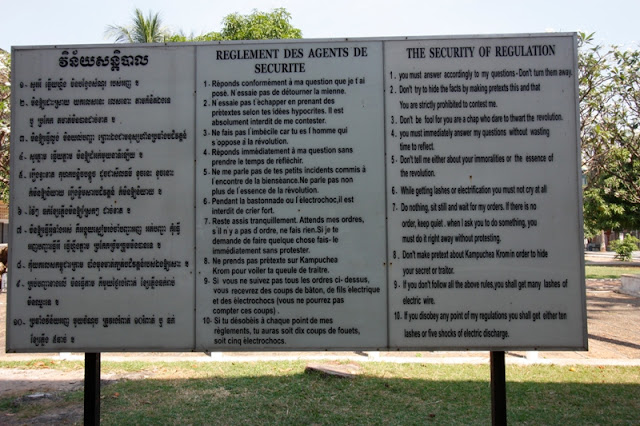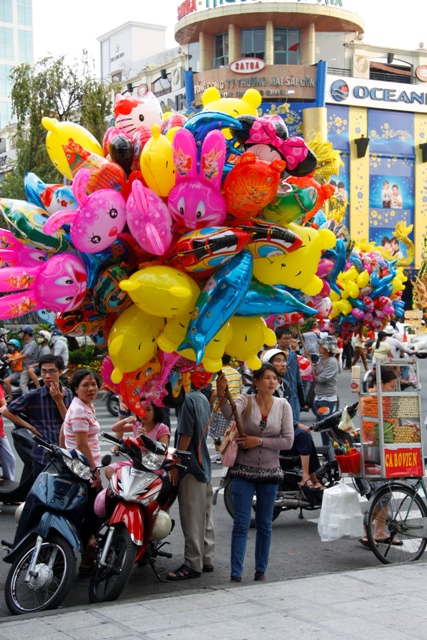After our time was up in Saigon it was off to Cambodia. The hotel was very helpful in getting us bus tickets for Phnom Penh and arranging a pick up to another place where we boarded the bus. On the way to the border the agents on the bus collected our passports and arranged Cambodian visas. It took around 2 hours at the border to get through before lunch nearby. Then is was another hour on the bus to Phnom Penh. Plenty of tuk tuk drivers there to negotiate with for the ride to our hotel.
We allowed 2 nights in Phnom Penh before heading to Siem Reap.
 |
| The Mekong from the Foreign Correspondence Club in Phnom Penh |
A recommendation for a good place for dinner is the Foreign Correspondence Club. Well worth a visit, good food, fantastic location and a must do place when in Phnom Penh.
Next day was full on to see the Royal Palace, S21 and the National Museum in Phnom Penh.
 |
| Spectacular Royal Palace in Phnom Penh |
 |
| Not sure what these structures are but there are four of them in the Palace grounds |
 |
| Wall paintings in need of restoration. |
 |
| Not sure what flower is but one of many in trees near the exit to Royal pavilions. |
After the Royal Palace we moved on to see another, very dark chapter in the history of Cambodia. Namely the S21 museum. You may remember Cambodia changing its name to Kampuchea. The Khymer Rouge regime under Pol Pot massacred millions in the 1970s until it was overthrown by the Vietnamese army on 7th January 1979.
A secondary school was turned in to prison / concentration camp and should be on your list of places to see in Phnom Penh.
 |
| One of four such buildings in the complex known as S21. |
S21- Security Regulations
An English transcript sets out what was expected!
1.
You must answer according to my questions. Don’t
turn them away.
2.
Don’t try to hide the facts by making pretexts
this and that. You are strictly prohibited to contest me.
3.
Don’t be fool for you are a chap who dare to
thwart the revolution.
4.
You must immediately answer my questions without
wasting time to reflect.
5.
Don’t tell me about your immoralities or the
essence of the revolution.
6.
While getting lashes or electrification you must
not cry out at all.
7.
Do nothing, sit still and wait my orders. If
there is no order, keep quiet, when I ask you to do something, you must do it
right away without protesting.
8.
Don’t make pretext about Kampuchea Krom in order
to hide your secret or traitor.
9.
If you don’t follow all the above rules, you
shall get ten lashes of electric wire.
10.
If you disobey any point of my regulations you
shall get either ten lashes or five shocks of electric discharge.
The gallows notice board is easier to read.
 |
| Dunking pots and gallows. |
We declined to got out to the Killing Fields after seeing what happened at S21. Instead we visited the National Museum. Plenty of relics here which had been rescued from some of the wats we were to visit around Siem Reap in a few days time.
 |
| Courtyard garden at the National Museum. |
After a big day out it in Phnom Penh, it was time to move on to Siem Reap the next day- a rather hair raising bus trip!






























